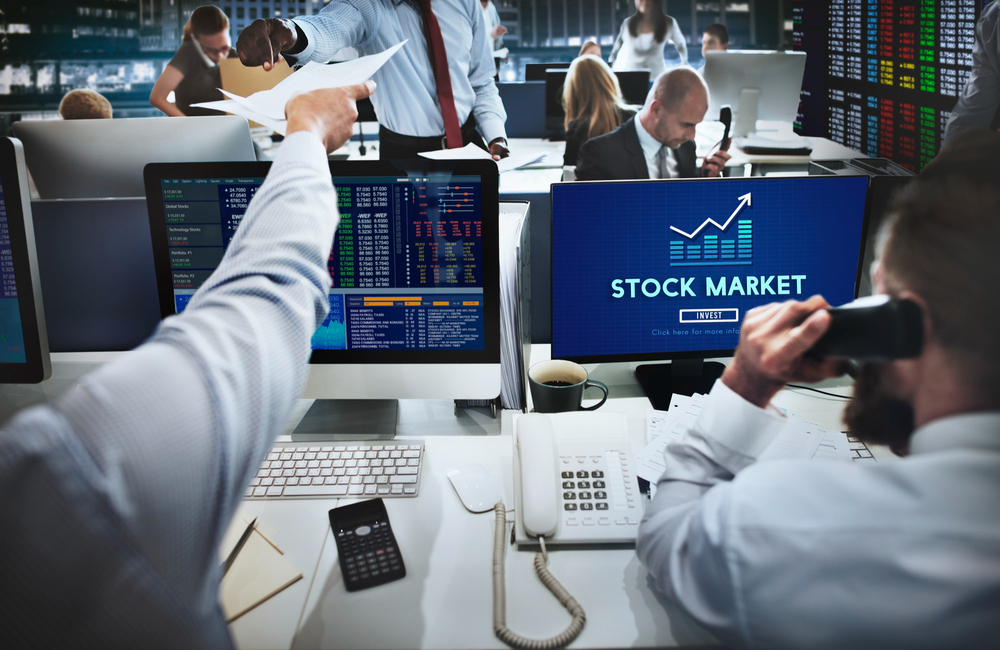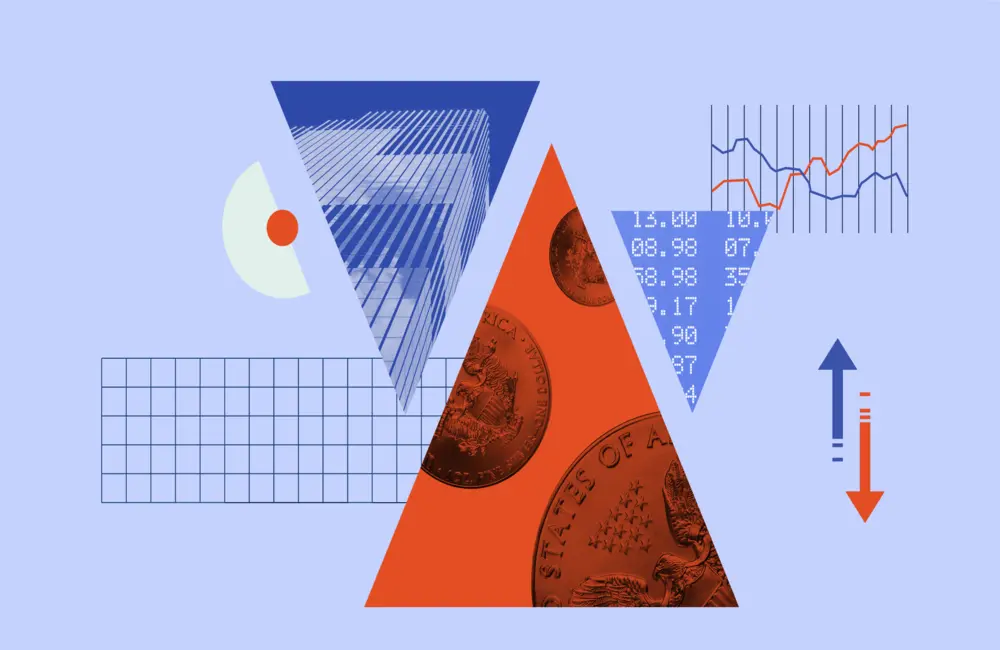ASX futures rose 31 points, or 0.4 per cent, to 7343 by 8.00 am AEST, indicating a lift in trade.
The moves Tuesday brought all three US indexes up at least 2.6% for the month to date, extending gains from last week. The Dow Jones Industrial Average was up 0.7%. The S&P 500 climbed 1.1%. The Nasdaq Composite rose 2.0%.
Equity markets that were rattled by half-hearted comments from Chair Powell on Monday have done a 180 on optimism for the robustness of the US economy. For some in the market, the Fed’s confidence in the US economy’s resilience to higher rates is a bigger signal than the actual rising rates themselves.
“The takeaway from the [Fed] meeting last week was that they are going to be tightening [monetary policy] but the US economy is resilient enough to be able to take that,” said Huw Roberts, head of analytics at a data analytics firm Quant Insight. “The equity market decided to focus on the economic resilience part.”
Technology stocks posted large gains in the early trading session, lifting shares of Apple, Facebook-parent Meta Platforms and Amazon to close up by at least 2%.
“You’re starting to see a little bit of the revenge of growth stocks,” said Wayne Wilbanks, co-founder and chief investment officer of Wilbanks Smith & Thomas Asset Management LLC. “Prices have collapsed, so valuations have improved a lot, to the point where that overcomes interest-rate concerns.”
Locally, the S&P ASX/200 closed 0.9% higher at 7341.1, with commodity stocks at the head of the pack. The benchmark ignored a weak lead from US equities which fell on higher bond yields.
The heavyweight-materials sector climbed 3.3%, boosted by strength in lithium and iron-ore stocks. Improved oil prices boosted the energy sector by 1.7%.
Westpac, ANZ, Commonwealth and NAB climbed between 0.3% and 1.1%. Tech stocks gave back overall gains, with Block at the top of the sector pessimism, falling 5.1%.
The ASX’s seventh gain in 10 sessions brings its run to 5.2% for the benchmark.
Australia’s central banker Philip Lowe said Tuesday he’s prepared to postpone raising the benchmark rates until there’s clear evidence in the data of accelerating wages and inflation. He acknowledged that there are mounting signs that psychology around inflation is shifting higher.
Iron ore fell 3 per cent to US$143.40 a tonne in commodity markets; Brent Crude jumped 1 per cent to US$114.41; gold futures fell 0.45 per cent to $1926.10.
The selloff in US bonds stretched into a second day after Fed Chair Powell’s hawkish comments on Monday. The US 10-Year Treasury Note yields soared to 2.38%. The yield on the Australian 10-year bond jumped to 2.71%. Yields rise when prices fall.
The Aussie rose to US 74.69 cents at 8.00 am AEST, higher than the previous closing price of 73.99. The WSJ Dollar Index, which measures the dollar against 16 other currencies, nudged down to 91.23.
Asia
Chinese shares closed the session with mixed results, easing back from some recovery since late last week. The benchmark Shanghai Composite Index added 0.2% and the Shenzhen Composite Index lost 0.4%. The tech-heavy ChiNext Price Index was the biggest loser, dropping 1.4%.
Property developers and property-management companies were among the biggest gainers, after the sector continued to rally on a set of local policy support measures announced in recent days. But the momentum was countered with declines in the pharmaceutical sector where drug makers fell back from the surging gains seen in previous sessions on improved sentiment about licensing agreements for potential Covid-19 medication.
All but two of the 48 Hungings stocks finished higher. The benchmark Hang Seng Index gained 3.1% as Alibaba jumped 11% to become the biggest winner on the index. The Chinese e-commerce giant lifted its share-buyback program earlier in the day to $25 billion from $15 billion, which analysts say should make it the biggest-ever share repurchase in China’s internet sector. Property developers were also buoyed by signs of a sales recovery and some developers’ progress on fundraising. Country Garden rose 8.1%.
Japanese stocks ended up, led by strong gains in energy and financial stocks, as higher oil and commodity prices increased the chances of the Fed's more aggressive policy tightening. Oil explorer Inpex rocketed 8.6% and Dai-ichi Life Holdings climbed 6.0%. The Nikkei Stock Average gained 1.5% to 27224.11.
USD/JPY is at 120.43 after touching 120.47 earlier, its highest since February 2016, compared with 119.47 Monday 5 pm New York. Investors keep his eye on headlines on Ukraine and commodities price.
Europe
European markets were higher as investors were generally more positive after absorbing upbeat outlook comments from the US Fed. The pan-European Stoxx Europe 600 rose 0.8 percent, its fifth day of gains.
“The mood is more risk-on for the day in financial markets and equities have mustered the strength to be on the rise again,” IG analyst Chris Beauchamp says. “Jerome Powell’s upbeat assessment of the US economy has lingered on to offer the needed salve for the fretful spirit of investors.”
In London, the FTSE 100 ended 0.5 percent higher on Tuesday as shares in big banks and insurance companies advanced. The biggest contributor to the index's rise was HSBC, which ended 3.2% up. Lloyds Banking Group gained 3.3%, NatWest was 3.1% higher, Prudential surged 4.1% and Aviva added 3.4%.
Increasing bond yields are benefiting financial shares, according to IG. “The FTSE 100 is higher with 7,500 the next round number resistance in focus. China-exposed stocks like Prudential and HSBC are at the top of the UK basket thanks to a rally in Asia overnight,” Interactive Investor also said.
North America
US stocks climbed and government-bond yields surged, as investors shrugged off fears that increasing inflation will pull the nation’s economy into a recession.
The moves Tuesday had each of the three US indexes up at least 2.6% so far for this month, continuing on from last week’s gains. The Dow Jones Industrial Average added 0.7%. The S&P 500 climbed 1.1%. The Nasdaq Composite rose 2.0%.
Nike rose after the apparel maker posted revenue that beat analysts’ estimates. Technology stocks also climbed, as investors dipped back into faster-growing companies whose shares were pounded earlier this year.
The stock benchmarks finished in the red on Monday, after Federal Reserve Chairman Jerome Powell signaled the central bank was ready to raise interest rates by half a percentage point if needed to douse inflation. By Tuesday morning, however, investors were reading Mr. Powell’s comments as a show of faith in the economy’s prospects.
“The message out of the [Fed] meeting last week was that they are going to tighten [monetary policy] but the US economy is robust enough to absorb that,” said Huw Roberts, head of analytics at Quant Insight, a data analytics company. “The equity market decided to focus on the economic resilience part of the thing.”
Tuesday’s gains were led by shares of banks and other financial firms likely to profit from rising long-term interest rates. Oil price went up, went down, then reversed yet again.
A selloff in government bonds continued to gather pace, lifting the yield on the 10-year US Treasury note to 2.375%, from 2.315% Monday. The yield on the benchmark note is now at nearly its highest level since May 2019, before the Covid-19 pandemic roiled financial markets. Bond prices fall, yields rise.
In the energy markets, futures for Brent crude, the international benchmark, slipped 0.1 percent to $115.48 a barrel. Brent prices dropped under $100 last week before rebounding. Support is growing within the European Union for a bloc-wide ban on Russian oil purchases, raising the prospect of more volatility.
“If you look at the market leadership in recent days, it’s a mixed bag,” said John Lynch, chief investment officer at Comerica Wealth Management. “The equity market seems to be mediocre, and the bond market doesn’t."
Stocks, bonds, commodities and currencies have been buffeted by volatility for a month as investors have struggled to gauge the economic consequences of Russia’s war in Ukraine. The tech-heavy Nasdaq Composite finished Tuesday with a move of 1% or more for the 39th time this year, as it culminated its most-volatile quarter since the first quarter of 2009.
Many investors have worried that the war may maintain inflation at a high level and slow growth in the US and Europe.
This week, however, investors got a new curveball when Mr. Powell, speaking Monday, sounded a tougher note than he did when the Fed hiked interest rates from near zero last week. He highlighted the uncertainty confronting the central bank and said the Fed would adopt a more restrictive posture, if it was needed.
The remarks led some analysts and investors to reconsider interest-rate expectations. After Mr. Powell spoke, economists at Goldman Sachs wrote in a note that they now expected half-percentage-point increases at each of the Fed’s meetings in May and June. That compares with an expectation of quarter-percentage-point increases at both meetings previously.
Monday’s remarks increased investor concerns that the Fed could be tightening more aggressively just as the economy slows. “The big variable now is the economic growth side of things,” Mr. Roberts said.
Many investors are closely examining the so-called yield curve, which measures the spread between short- and long-term rates, and is widely viewed as a reliable barometer of sentiment about the prospects for economic growth. Recently, the difference between yields on shorter-term and longer-term US Treasury bonds has gotten narrower, prompting fears that the bond market is on the verge of signaling an imminent recession.
The two-year Treasury yield, which is particularly sensitive to changes in monetary policy, rose to 2.152% on Tuesday, from 2.132% on Monday.
Shares of banks rose. Financial stocks were among the biggest gainers in the S&P 500, with the sector rising roughly 1.6%. Wells Fargo gained $2.25, or 4.4%, to $52.39, and Signature Bank climbed $10.30, or 3.3%, to $321.18.
Nike gained $2.90, or 2.2 percent, to $133.09.
“Nike is the best global company, because they sell and source everywhere,” said Jack Ablin, chief investment officer at Cresset Capital. “It’s a great barometer, and they soothed a lot of investors’ fears.”
Shares rose for communications and technology companies, too. Etsy gained $5.98, or 4.2 percent, to $148.25, and Match Group rose $4.28, or 4.3 percent, to $104.31. Amazon.com rose for a sixth straight day, Dow Jones Market Data show. The stock finished at $3,297.78, a gain of $67.95, or 2.1%.
Okta dropped $2.98, or 1.8 percent, to $166.43 after a hacking group circulated screenshots that it claimed backed up its claim that it had accessed Okta.com’s administrator and other systems.
You’re reading the First Edition of The Times’s science newsletter.























